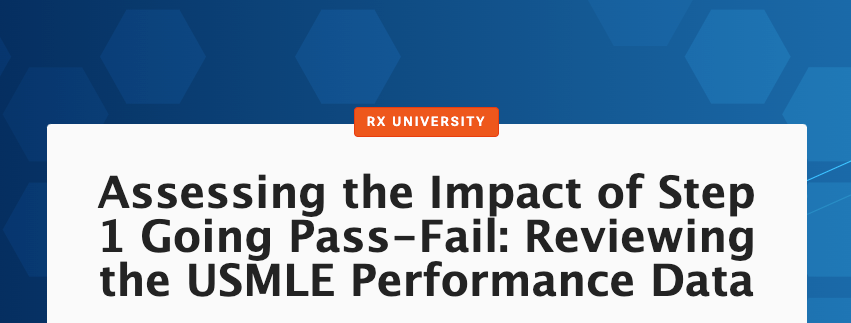Assessing the Impact of Step 1 Going Pass-Fail: Reviewing Performance Data

The decision to make the USMLE Step 1 exam pass-fail in early 2022 had many of us wondering how the change would affect student preparation and scores. In March 2023, the USMLE released a full report on the 2022 performance data for the Step 1, Step 2 CK, and Step 3 exams. In this Brick, we explored the student performance data and the short-term and long-term implications for undergraduate medical education.
Why the Move to Pass-Fail?
Previous cohorts often spent incredible time preparing for Step 1, hoping for a high score – not just a passing grade. Step 1 scores were often seen as a residency director’s filtering mechanism, and students believed a score of 250 or higher would help them land their desired residency.
Experts hoped this change would help reduce the stress levels of med students and transition them more smoothly into residency. The move to pass-fail was intended to benefit medical students, but the numbers show that the pendulum may have swung too far in the other direction. Passing rates dropped from U.S. and Canadian D.O students to International Medical Graduates.
Examining the Decline in 2022 Passing Percentage
The total number of failed Step 1 exams in 2022 was roughly 9,700, as opposed to around 5,700 in 2021. Additionally, the:
- Step 1 pass rate amongst MD students dropped from 95% in 2021 to 91% in 2022
- The overall passing rate fell from 88% in 2021 to 82% in 2022
There were more test-takers in 2022, including an additional 548 first-timers. Nearly 1,600 first-time MD test-takers failed in 2022, compared to about 900 in 2021, a roughly 75% increase year-over-year.
Why Did USMLE Step 1 Passing Rates Drop?
More research and analysis are necessary to identify which factor(s) played the most significant role in the drop in Step 1 scores. We explore several in this Brick, hoping to find ways to help your students do better on Step 1 and all their exams.
